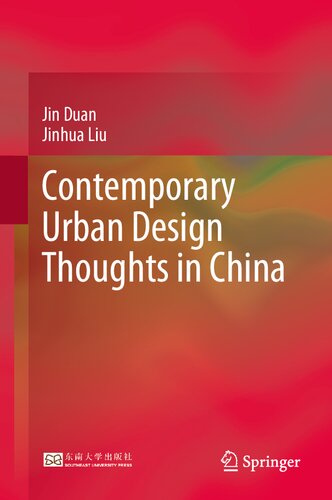

Most ebook files are in PDF format, so you can easily read them using various software such as Foxit Reader or directly on the Google Chrome browser.
Some ebook files are released by publishers in other formats such as .awz, .mobi, .epub, .fb2, etc. You may need to install specific software to read these formats on mobile/PC, such as Calibre.
Please read the tutorial at this link: https://ebookbell.com/faq
We offer FREE conversion to the popular formats you request; however, this may take some time. Therefore, right after payment, please email us, and we will try to provide the service as quickly as possible.
For some exceptional file formats or broken links (if any), please refrain from opening any disputes. Instead, email us first, and we will try to assist within a maximum of 6 hours.
EbookBell Team

4.4
52 reviewsThis book proposes and systematically discusses four trends of thoughts in contemporary Chinese urban design. As the first book to systematically introduce contemporary Chinese urban design thoughts, this book objectively displays the macroscopic picture of contemporary urban design development of China from the time dimension, sorting out seven historical stages and three disputes.
This book is mainly divided into two parts. The first part focuses on the vertical description, taking the major events in the seven historical stages as the context, combing the macro picture of the development of contemporary urban design in China in the last 100 years, and describing the three controversies in this process: contention, subject, and legalization. The second part focuses on horizontal observations, puts forward and systematically discusses the four trends of thought formed in the development of contemporary urban design in China, including “Design of Form,” “Synthesis of Design,” “Control of Design,” and “Design of Rule”. This part discusses their development background, theoretical support, and key concepts in detail and finally conducts critical thinking.The whole book is based on historical events, archives, and papers published in Chinese academic journals. While sorting out, summarizing, and objectively discussing, it also makes a critique of urban design activities and academic thinking in China, which will greatly benefit scholars and readers who are interested in urban design history of contemporary China.